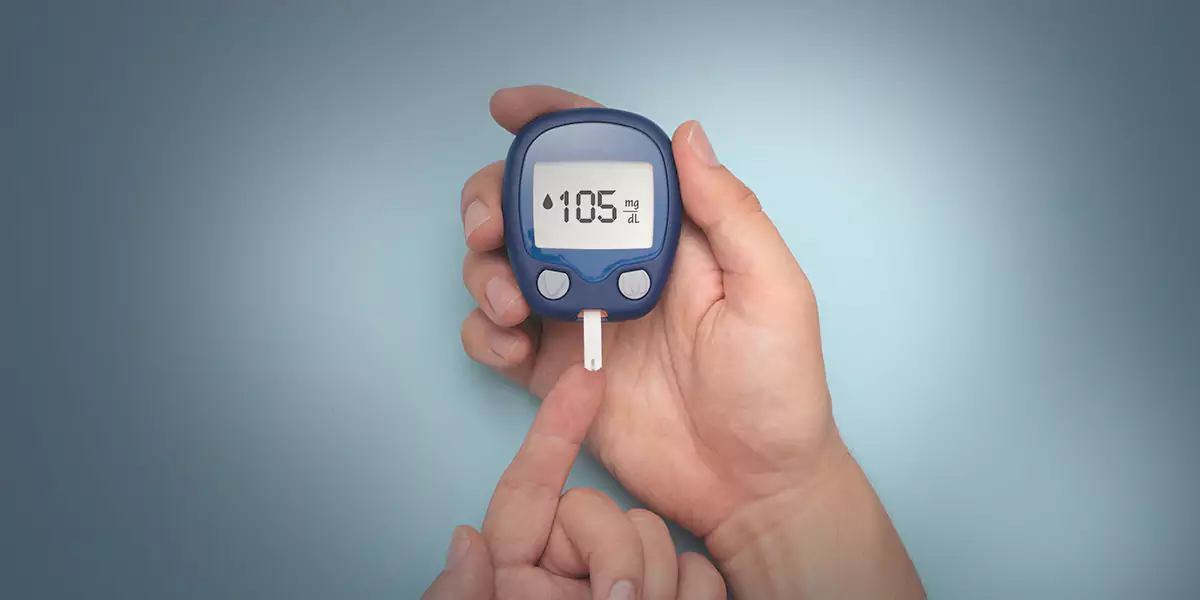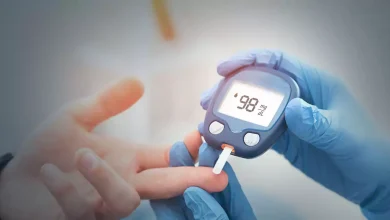What is Prediabetes?

You have prediabetes when you have a higher-than-normal blood sugar level that is not high enough to be considered type 2 diabetes yet. But if you don’t consider lifestyle changes then children and adults are at an increased risk of developing type 2 diabetes. If you have prediabetes, the long-term damage of diabetes — particularly to your heart, blood vessels, and kidneys might already have begun. However, there is good news that progression from prediabetes to type 2 diabetes is not inevitable. Losing weight, exercising regularly, and eating healthy are helpful to reverse prediabetes and avert Type 2 diabetes.

What are the Symptoms of Prediabetes?
Many people don’t show symptoms of prediabetes, even for years until it develops into Type 2 diabetes.
Some people with prediabetes might experience:
– Skin in the armpit or back and sides of the neck might get dark.
– Skin tags, tiny skin growths.
– Eye changes that can result in diabetes-related retinopathy.
What are the Causes of Prediabetes?
Researchers have not yet found the exact cause of prediabetes but it seems that family history and genetics might play an important role and people with prediabetes can’t process sugar (glucose) properly anymore.
You get most of the glucose in your body from the food you consume. When you eat food and it is digested, sugar enters your bloodstream. Insulin permits sugar to enter your cells — and reduces the amount of sugar in your blood.
A gland located behind the stomach called the pancreas produces insulin. When you eat your pancreas transfers insulin to your blood. When your blood sugar level begins to drop, the pancreas slows down the secretion of insulin into the blood. When you have prediabetes, this process doesn’t function properly and due to this, instead of fueling your cells, sugar accumulates in your bloodstream. This might happen due to:
– Your pancreas not producing enough insulin
– Your cells become resistant to insulin and do not allow as much sugar in

What are the Risk Factors of Prediabetes?
The risk factors of prediabetes include:
– Age (being 45 or older).
– Family history of 2 diabetes.
– Ethnicity
Though people of any race can have prediabetes, people with African-American, Native American, Hispanic, Asian-American race, or Pacific Islander ethnicity are more at risk of developing prediabetes.
– Having gestational diabetes earlier.
– Polycystic ovary syndrome (PCOS).
– Taking some specific medications, including steroids, certain antipsychotics, and HIV medications.
– Hormonal conditions, like Cushing’s syndrome and acromegaly.
– Sleep disorders, including sleep apnea.
– Obesity or carrying extra weight.
– Not having much physical activity
– High blood pressure or high cholesterol levels.
– Metabolic syndrome
– Combination of large waist measurements, high blood pressure, and high cholesterol levels.
– Smoking.
What are the Complications of Prediabetes?
– Type 2 diabetes.
– Heart disease.
– Stroke.
– High blood pressure
– High cholesterol
– Kidney disease
– Nerve damage
– Fatty liver disease
– Eye damage
– Amputations
How Prediabetes is Diagnosed?
To diagnose prediabetes, a blood test will be done by your doctor including:
– Fasting plasma glucose test
Your blood sample is sent to a lab to examine after you have fasted for eight hours (had nothing to eat or drink except water).
– A1C test
It provides your average blood glucose level over the past two to three months.
You will be diagnosed with prediabetes:
– If your fasting plasma glucose test result is 100 to 125 mg/dL (normal is <100 and diabetes is 126 or higher).
– If your A1c test result is 5.7% to 6.4% mg/dL (normal is < 5.7%) and diabetes is 6.5% or higher)
What are the Treatment Options Available for Prediabetes?
Healthy lifestyle changes are the best way to treat diabetes along with a nutritious diet and regular exercise can help delay or avert Type 2 diabetes.
Steps to significantly lessen your risk of developing Type 2 diabetes include:
– Weight loss
Losing 6 % to 8% of your body weight can be effective.
– Regular physical
Indulging in regular physical exercise can be quite helpful.
– You can consult with a nutritionist or dietitian and plan a healthful diet for the long-term.
– Find ways to decrease or manage stress.
– Quit smoking and control drinking alcohol.
– Treat sleep disorders.
– Manage related disorders, like high cholesterol and high blood pressure.
Medication
Your doctor might refer metformin, a diabetes medication that helps delay diabetes in people with prediabetes
Living with Prediabetes
Your risk of having diabetes, heart disease, and stroke might increase if you have prediabetes but you can take steps to lower your risk. Prediabetes is a common condition that implies that your blood sugar levels are high but not high enough to be considered diabetes. Many people don’t show any prediabetes symptoms. It’s quite vital to consult your doctor about getting regular blood tests, such as an A1C test, especially if have an increased risk. You can also join support groups where you can meet other people going through the same issues.
Whom to Consult?
If you are concerned about diabetes or if you experience any signs or symptoms of type 2 diabetes. You can also ask your doctor about blood sugar screening if you have any risk factors for diabetes.




